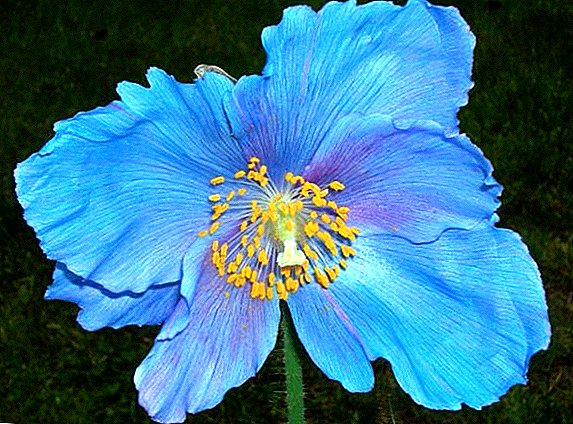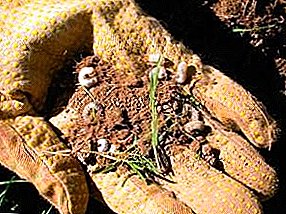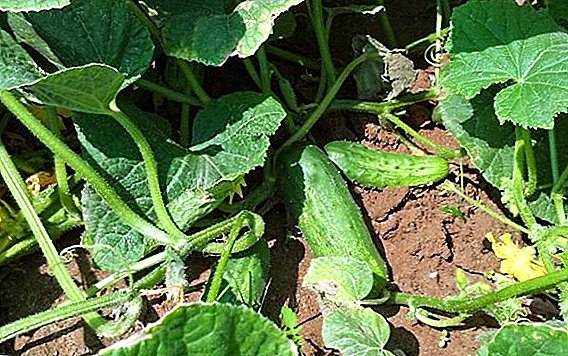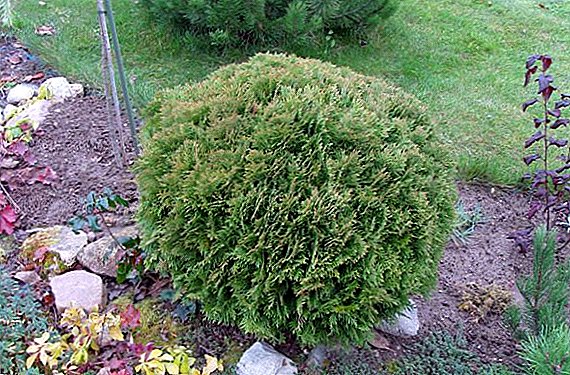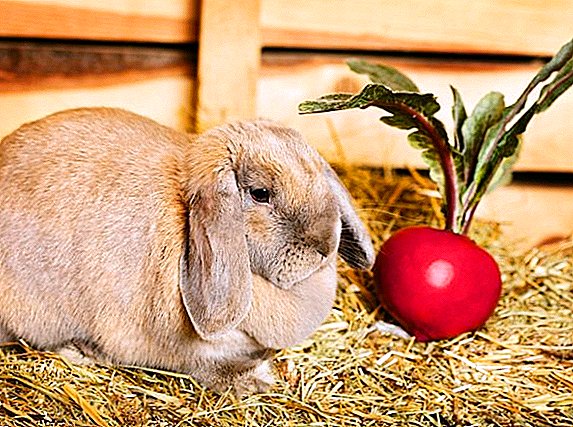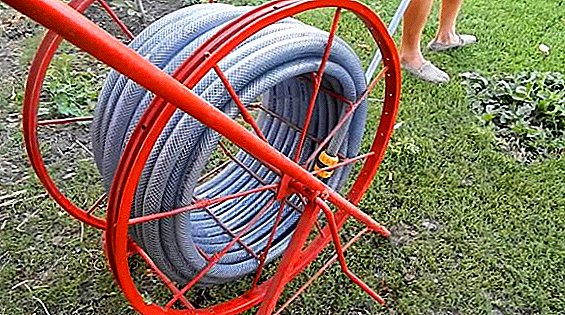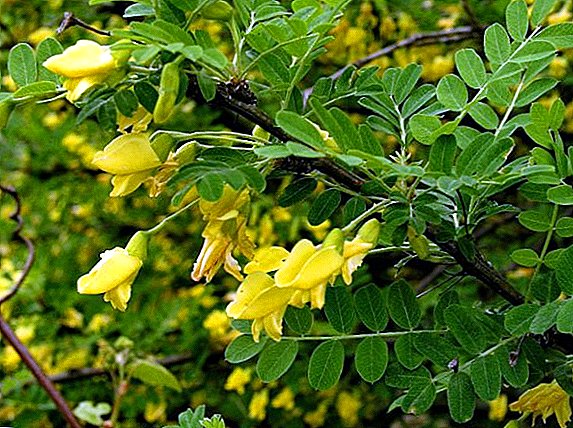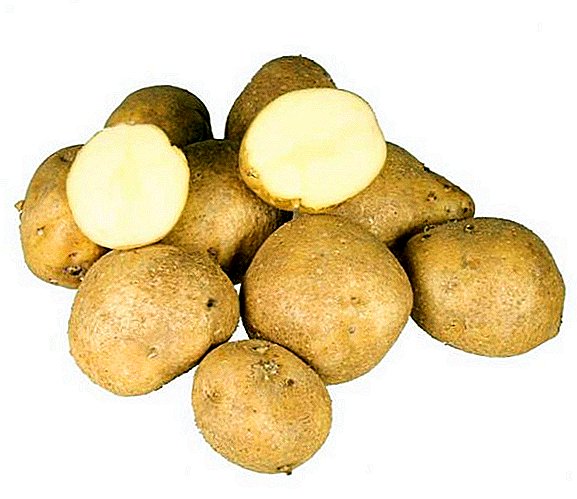 The choice of potatoes for planting in the country or a plot is a very important matter, because the right variety is the key to a good harvest. Today there are many different varieties of this vegetable, and they all differ from each other in taste, color, size and other characteristics.
The choice of potatoes for planting in the country or a plot is a very important matter, because the right variety is the key to a good harvest. Today there are many different varieties of this vegetable, and they all differ from each other in taste, color, size and other characteristics.
The variety "Blue" has earned popularity among many gardeners for its simplicity in cultivation, beautiful presentation and excellent taste of tubers. In our article we will get acquainted in detail with the potato "Blue", we will learn the description of this variety and we will be able to visually admire it in the photo, as well as we will analyze the feedback from experienced gardeners about this species.
Description
This variety was bred by Russian breeders and in 1993 entered into the State Register of the Russian Federation. He has a relationship to medium late grades, as the period of its growing season ranges from 80 to 100 days after the appearance of the first shoots.
Planting potatoes "Blue" in your garden, during its flowering, you will get a kind of cornflower bed. Numerous bright blue, sometimes pale-purple flowers form on the bushes of this root, which determined the name of the variety. The bushes themselves reach an average height, but they are a rather lush plant with rich green broad leaves. Tubers grow rather large sizes - the weight of an average potato fluctuates from 90 to 150 g. It has a round-oval shape, beige color and numerous small eyes. The skin itself is thin, with a fine mesh on the surface. The flesh of the potatoes is white, tender, has a high starch content and good crispness. Such potatoes are ideal for making mashed air.
Potato tubers, besides being tasty, are also very healthy. They contain a lot of potassium, calcium, phosphorus, magnesium and iron. Vitamins such as C, B, B2, B6, B PP, D, K, E are full of folic acid, carotene and organic acids: malic, oxalic, citric, coffee, chlorogenic, etc.
Did you know? The most expensive potato in the world is considered to be "La Bonnotte", grown on the island of Noirmoutier. It is very tender and tasty. A kilogram of such potatoes costs about 500 euros.

Features of growing varieties
Potatoes "Blue" for its excellent characteristics of the variety received a lot of positive feedback from many gardeners. Having decided to grow it in their beds, it is worth getting acquainted with the characteristics of the variety.
Landing place
Place for landing should be open, well lit and warmed by the sun. It is not necessary to determine for this areas under the trees or a canopy. Lowlands are also not suitable, where such phenomena as fogs and water stagnation are frequent.
Be sure to consider crop rotation when planting potatoes. Ideal for him would be the places where cucumbers, cabbage, any legumes, and all cruciferous plants used to grow. Do not plant potatoes to replace tomatoes and peppers.
Important! If a specific place is allocated for potatoes in your garden and you grow this vegetable on it year after year, be sure to farm the land with the green man after harvesting the next crop. White mustard is good for this.

Soil type
The grade "Blue" differs in the unpretentiousness to soil. It successfully grows in all regions of the country and has an excellent ability to adapt to different conditions. It grows well on sandy and loamy soils with a loose texture. The main condition for good germination is the temperature of the soil is not lower than 7 degrees Celsius. The potato loves fertile soil and will be very grateful for the preliminary mineral fertilizer of the beds before planting.
Did you know? The concept of potatoes is not limited to the root crop, which grows exclusively on the beds in the ground. Potato trees grow everywhere in the tropics of South America. They reach 15 meters in height and produce inedible purple-black fruits and berries all year round.
Rules of planting varieties of Russian breeding
For proper growth and a healthy harvest of potatoes when planting it is worth following some simple rules.
The best period for landing
Based on the testimonies of breeders who discovered the "Blue" potatoes for us, and on the feedback from experienced gardeners who have already planted this variety, the beginning of May is considered to be an ideal time for planting potatoes in the ground. If the year is warm and in the middle of spring the weather has become completely summer, landing can be done a couple of weeks earlier.
If the year is warm and in the middle of spring the weather has become completely summer, landing can be done a couple of weeks earlier.
The main thing is not to delay this process: having missed a week or two, there is a high risk that the potatoes will be poorly stored, the percentage of starch content in tubers will decrease, or it simply will not germinate. Moreover, in the composition of late-planted potatoes, the amount of nitrates is much higher.
Preparing and planting potatoes
First of all, it should be said that there are two ways of planting this root: ridges and ridges. Ridges are used by residents of regions with high humidity, and they are planted on dry ridges on crests. It is important not to thicken the plot with potatoes, so that the roots can freely eat and form fruits. Usually the distance between the rows is kept from 70 to 90 cm, and between the bushes - 30 cm. In the beds, potatoes are deepened by about 6 cm, while on the ridges the depth increases to 8 cm.
Before dropping a tuber into the hole, a couple of handful of rotted manure or compost is thrown into it, a little ash, and you can add bird droppings in the form of powder. All this mixture is combined with the ground and sprinkled with earth a couple of centimeters. After that, the tuber is immersed in the hole sprouts up, buried, and the soil is leveled with a rake. If the potato for planting is too large - it must be cut into pieces. 
Important! If the climate of the area for growing is very hot, you can use and not germinated tubers. For this, the landing depth is increased by 10-12 cm.
How to care for "Blue"
After the tubers are in the ground, you have to wait first for the first shoots, and then for the fruits, while simultaneously caring for your plants. Care for the variety "Blue" is standard for crops of this species.
Watering
This species is not picky and does not require too frequent watering. It grows well even with a lack of moisture, so you can irrigate your beds as needed, based on soil conditions and weather conditions. On average, this will be several times over the entire growth period.
Their peculiarities of growing each potato variety are Rosara, Irbitsky, Gala, Adretta, Koroleva Anna, Luck, Kiwi.
Hilling and loosening
Regular hilling and loosening is necessary for a crop such as a potato. These procedures increase the flow of air and minerals to the roots, and also stimulate the growth of additional lateral roots, which significantly increases the level of yield of this root. Hilling the trunk of the bush and loosening the top layer of the earth should be done after each watering or rain, when the soil has already absorbed all the water, but did not have time to dry. This is the prevention of the formation of crusts on the surface of the earth after it is moistened. 
Top dressing
Potatoes are very fond of fertilized land, and the variety "Blue" will be very grateful to you for timely feeding. This event can be carried out in different ways using different raw materials:
- Bird droppings. Before hilling bushes beds watered with a solution of this tool with water in the ratio of one to ten.
- Mullein. As a fertilizer for irrigation, they prepare the following starter: 1 liter of fresh manure + 10 liters of water. Before use, the liquid must be fermented.
- Tinctures of herbs. For this fit any grass, which is poured with water and fermented. After that, diluted to light brown color, watered wells. This procedure is useful for potato bushes in June, when they need nitrogen.
- Urea. For 10 liters of water you need to take 200 g of urea, 300 g of potassium monophosphate and 10 g of boric acid. With this solution, you can feed the plants after the appearance of the first shoots, and then every two weeks until flowering. Before the first time it is necessary to dilute the agent twice with water.
- Superphosphate. 100 g of the product is diluted with 10 liters of water and the bushes are sprayed with it from the beginning of flowering and before harvesting.
- HUMATE +7. 10 liters of water for 2 g of the drug. Treat with this tool is to start when the 4th leaf appeared on the plant. Interval - 2 weeks.

Diseases and pests of the variety
Resistance to many diseases is one of the main advantages of the potato "Blue". It perfectly reflects diseases such as cancer, scab, rhizoctoniosis, Alternaria, Y virus and many types of rot. However, in wet weather, this variety has the risk of getting late blight.
If this trouble happened, you need to prepare the following solution: 10 liters of water, 150 g of lime and 100 g of copper sulphate. Or 10 liters of water for 40 g of the drug "Hom". It is worth treating plants with these means at the first signs of late blight infection. But no later than 20 days before the need to harvest.
When chlorosis leaves use a solution of manganese sulphate with water (5-7 g per 10 liters). Signs of infection with this disease will be shriveled leaves and the dark brown color of the vascular system of the plant.
From the well-known potato pest - the Colorado potato beetle - I will help drugs such as "Commander", "Iskra DE" and "Dilor". The last to handle bushes is thrice. Against the bear there is an excellent means "Medvetoks". You can purchase these drugs at any specialty store and you should carefully read the instructions before use.
For the prevention of infection with all sorts of pests is regularly weed beds with potatoes, preventing the growth of weeds near the bushes. These small insects often live near the weed grass.
The advantages and disadvantages of "Blue"
We list all the advantages and disadvantages of potato varieties "Blue".
Its advantages include:
- High resistance to most common diseases and viruses.
- Drought resistance.
- High yield (from one hundred square meters you can collect up to 1.5 tons of potatoes)
- Cold resistance
- High ability to adapt to different growth conditions.
- Unpretentiousness to the soil. Willingness to grow and bear fruit even in the land with high groundwater levels.
- The taste of potatoes
- Commercial type of harvest.
The variety "Blue" deserves the love of many gardeners, its potatoes are distinguished by their positive characteristics, and all those who grow it on their beds for many years, advise others to become owners of this tasty, unpretentious, easy to grow and care for root vegetables garden.


